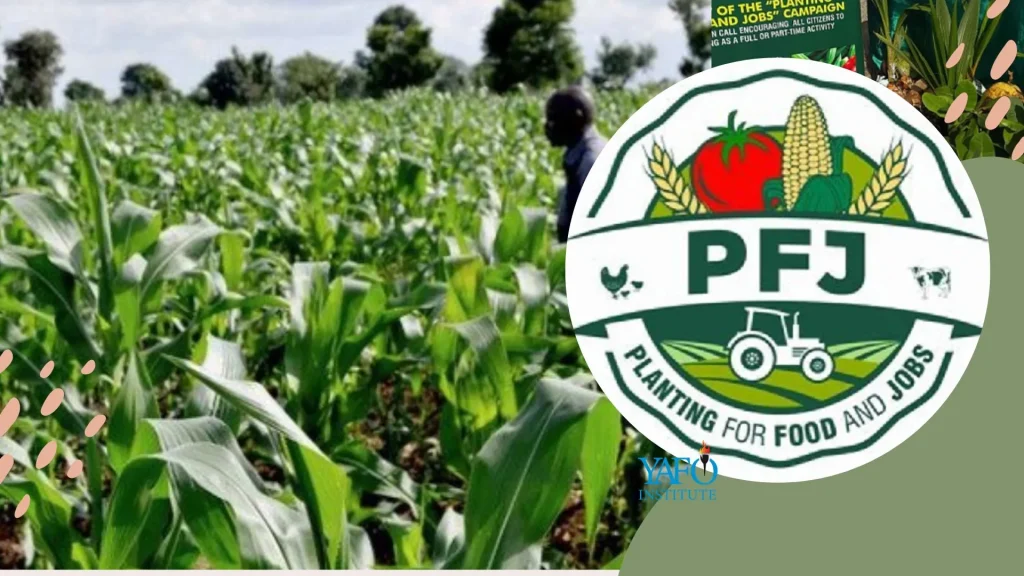PFJ Phase Two must yield desired outcomes
Abtvgh / Ghana PFJ Outcomes
One of the major interventions of the government which was launched in 2017 was the Planting for Food and Jobs as part of the country’s efforts to end hunger, achieve food security and promote sustainable agriculture.

The main objective of PFJ is to enhance productivity of selected crops to feed the population as well as expand job opportunities through integrated services on farming and marketing.
Six years after its implementation, the Ministry of Food and Agriculture had to review its performance and impact which has led to the birth of PFJ Phase Two (2.0)
Consequently, President Nana Addo Dankwa Akufo-Addo yesterday launched the Planting for Food and Jobs Phase Two (PFJ 2.0) for better outcomes.
The PFJ 2.0 of the initiative, known as the Input Credit System which replaces the input subsidy programme under the first phase, will provide affordable and timely credit specifically designed to meet the needs of farmers.
The Daily Graphic acknowledges the fact that access to credit has always been the bane of farmers in the country and so, by providing credit to farmers, they will be empowered to make informed choices and invest in the inputs that will significantly boost their productivity.
It is not for nothing that most institutions and even government agencies take stock of their performance and chart a new course to improve on deliverables.
Therefore, stock taking of the state of affairs of any programme, which involves a thorough analysis of available data, is necessary to identify and cover up gaps to ensure efficiency, effectiveness and to unlock its full potential.
In taking stock, the Ministry of Food and Agriculture identified gaps in the production of some food crops, animal production, extension services, agriculture infrastructure and food self-sufficiency.
In addition, issues of inefficiencies, post-harvest losses, agric financing, poor agronomic practices and low adoption of technology were identified.
The review exercise also highlighted the need for a change in strategy to tackle the problems in the agricultural sector decisively.
It is said that the one creating a path in a bush is unable to tell whether it is straight or not.
It takes those behind to alert him about veering off.
And so, it was only proper for Dr Acheampong to listen to stakeholders to enable him to straighten the path.
We are happy that President Akufo-Addo has reaffirmed government’s commitment to improve access to agricultural inputs, foster the adoption of modern farming practices and technologies, and ultimately catapult the agricultural sector to new heights.
It was good that the President acknowledged that even notwithstanding the successes under the PFJ Phase One, it encountered some limitations during the implementation.
Some of the limitations include heavy financial burden on the government imposed by subsidies on seeds and fertilisers, limited adoption of the value chain approach and limited access to agricultural credit; low prioritisation of national strategic stock, ineffective monitoring of input suppliers and distributors, and targeting of only smallholder farmers.
The Daily Graphic hopes that in ensuring a successful rollout of the phase 2.0, the ministry will be guided by some of these challenges encountered in the implementation of phase one.
Replacing the input subsidy with the input credit system for us is a giant step towards addressing the challenges the PFJ Phase one encountered during its implementation.
It was an open secret during the PFJ Phase One that subsidized inputs were smuggled across to neighboring countries and to the open market, while the real beneficiaries were left without the inputs.
It is envisaged that with the PFJ 2.0, the credit system will cut out individuals and intermediaries, from fronting as farmers.
Such individuals have no business dabbling in issues involving farmers any longer.
We hope the mistakes and the lessons from the implementation of the PFJ Phase One programme will prove useful in the execution of the second phase so that all the expected outcomes will be achieved.



